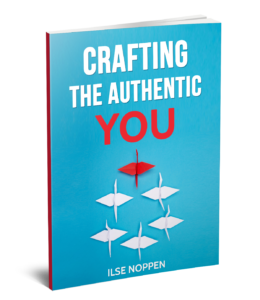Last week I was part of a panel at HumanizeTheWorkplace, discussing ‘How to Boost Your Wellbeing While Working From Home?’. It was a fantastic moment of sharing and exchanging ideas, observations and experiences.
The last question our host, Vivian Acqua, asked was: What is your wish for 2025 when it comes to humanizing the workplace and workplace wellness?
Great question. And honestly where to start as there is so much to say.
Yet, for me, there is one starting point I would like to see: people growing more self-aware, using their talents, taking actions in line with their values and their purpose. Those are three pillars in self-awareness: Talents, Values and Purpose.
It is indeed my belief that if we are aware of our gifts, we share them with the world, inspire others and recognise the best in others. That naturally leads to humanizing the workplace.
These insights bring self-confidence, because the more self-aware we become, the less we question ourselves. As a result, it frees up mental space to give attention to others around us.
Let’s zoom in on talents, those activities that come naturally to you, that you do well over and over again and that give you mental energy. When I work around talents with my clients, we identify both their energy givers and energy drainers. In my view knowing your drainers is as important as knowing the things you love doing.
An example. Most of my clients don’t acknowledge their creativity at first – but I have yet to meet someone who is not creative!
Very often when we think of creativity we think of arty creativity. That really is an expression of aesthetic creativity. Creativity is much more!
In the tool I work with, we identify different kinds of creativity. In short, we distinguish three types:
- Useful creativity is the drive to solve a problem, being the trouble shooter, looking at what is feasible with what is at hand;
- Aesthetic creativity is having an eye for colour, beauty, and form, playing with ideas and seeing links which are not obvious to others, it’s about thinking out-of-the-box;
- Mental creativity is the inventor’s creativity, this is thinking ‘without a box’ as I like to call it, it’s freewheeling, playing with ideas with the sky as the limit.
So what type of creativity do you have? Or more specifically: which combination do you have in you?
Having clarity on your talents, helps you develop your self awareness. It’s not enough to know your talents though: you need to own them. You need to understand why you feel mentally charged today – or drained for that matter.
Once you own your talents, it becomes easier for you to identify the talents of others.This is important for every leader, and particularly when you step into a new management role, you want to be in the position of owning your talents. That way, you free up the mental space to give more attention to your team members and colleagues, as well as everything else that comes with your role.
Talents make up the blueprint of your personality and thus influence your leadership. You can use them to develop your leadership.
To continue on the example of creativity:
Imagine your team has to come up with a new product or solution for a client. The inventor’s creativity is very strong in you and you are brimming with ideas. You have that one team member however, John, who is constantly shooting down new ideas finding faults in them.
Your first reaction might be to get irritated with John because ‘he resists change’ or ‘he just doesn’t get it’. However, you could instead use his strength: it is likely that John doesn’t have much of the inventor’s creativity, but is very driven in finding out which solution or idea might actually work, focusing on the feasibility, the useful creativity.
As a leader, you might put the team members who love generating new ideas together and then bring in John to challenge them on their ideas. If an idea passes the test, your team might be on something great!
Humanizing the workplace is also about giving recognition to colleagues and team members for what they are great at. It’s about using all the talents that are available in yourself and your team. When you own your talents, you understand others better through recognizing their talents. The same goes for values and purpose.
I have seen it so often in leaders: once they have that clarity about themselves, who they are and what they stand for, it’s like a weight falling off their shoulders. They stand taller and stronger, stop questioning themselves and start focusing on developing and fine tuning their leadership and growing their teams.
A recent study by Robert Half has shown that with Covid there is a significant drop in Happiness at work as a result of which the Monday blues have increased. A survey by Deloitte shows that 80% of companies believe well-being is important, yet 12% believe they are ready.
Let’s change that. Let’s become more self-aware so we can find joy in our work and help others find joy too and become more resilient. Each and everyone of us can make a difference. Let’s start – today.
What is your wish for 2025 when it comes to humanizing the workplace and workplace wellness?
